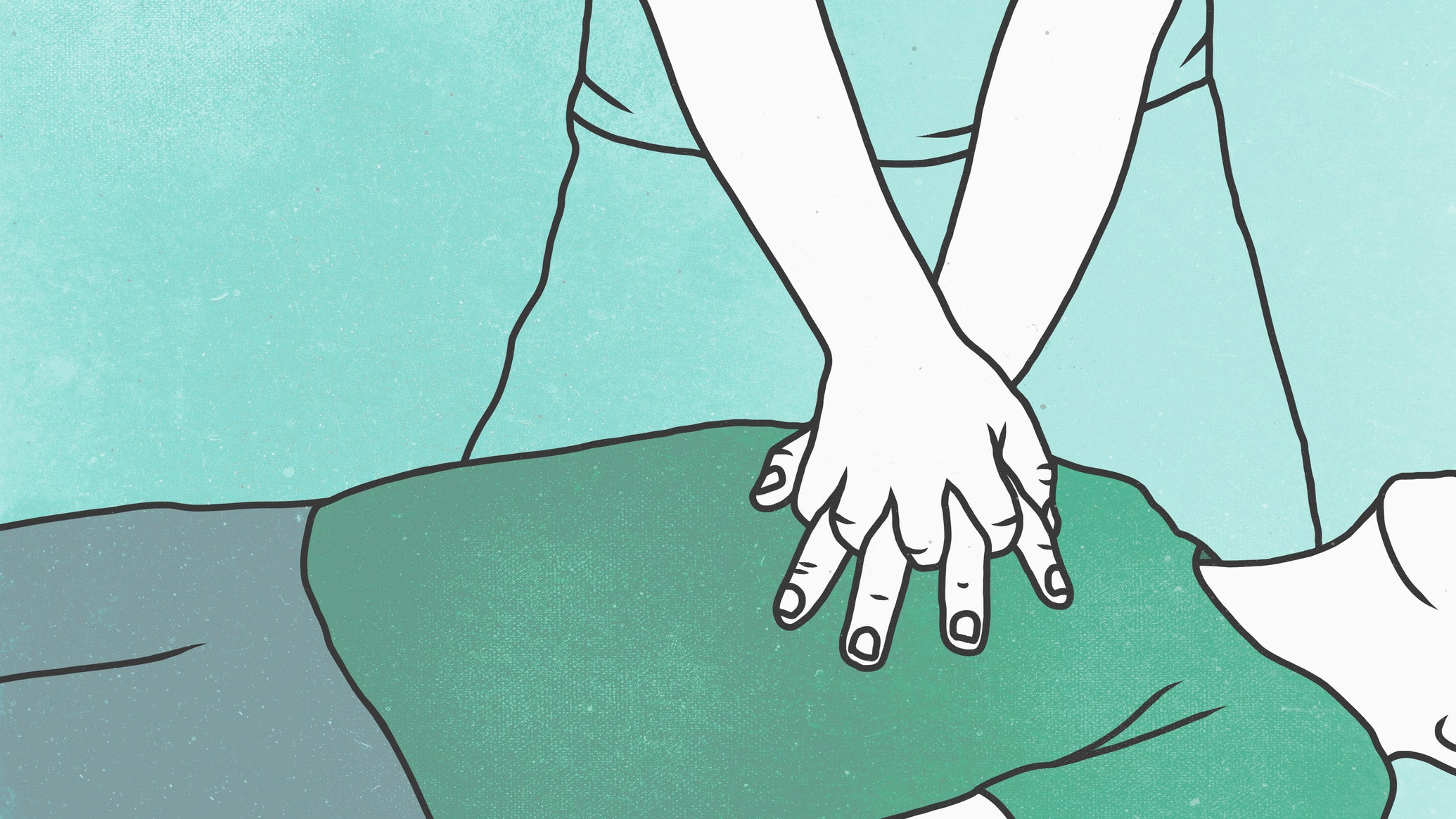The Lifesaving Skill Every Endurance Athlete Should Know

Performing CPR is not as complicated as many people believe. (Photo: Getty Images)
Endurance events are designed to push the body to the limit, so it’s not surprising that sometimes that limit is discovered. Though race deaths are rare, they do happen: a 2018 study published in the Annals of Internal Medicine evaluated the rate of cardiac events in nine million triathlon participants over 31 years. Results showed death and cardiac arrest is about a 1.7 per 100,000 people; most had an underlying heart disease or heart abnormality. For marathon runners, the estimates are about one of every 57,000 participants during a marathon.
“Exercise can be a trigger for Sudden Cardiac Arrest (SCA) in individuals with an underlying heart condition,” explained Dr. Jonathan Drezner, director of the University of Washington Medicine Center for Sports Cardiology and spokesperson for the American Heart Association. “With new and larger events, the possibly of a life-critical collapse becomes more tangible.”
Races are well-equipped to handle cardiac events, often partnering with local emergency medical services and local hospital emergency departments to plan for the response to all medical events, including cardiac arrest, on course. But fellow athletes may be the most important first responders.
When a person has a cardiac arrest, survival depends on immediately receiving CPR from someone nearby—not waiting until medical responders arrive. According to the American Heart Association, about 90 percent of people who suffer out-of-hospital cardiac arrests die. CPR, especially if performed immediately, can double or triple a cardiac arrest victim’s chance of survival. But cardiac arrest victims don’t get CPR from bystanders as often as they could. Studies have shown that about 70% of Americans don’t have the confidence to perform CPR in an emergency situation, and would be reluctant to provide it when needed. That’s why it’s important for all athletes to become familiar with this lifesaving skill.
Many people assume CPR is complicated—locating the exact right spot to press on the chest, counting chest compressions, and administering mouth-to-mouth rescue breaths. But Drezner says hands-only CPR, a simplified version of mouth-to-mouth, has been shown to be as effective as conventional CPR for cardiac arrest. This process only takes two steps:
1) Call 911.
2) Push hard and fast in the center of the chest.
Once CPR is started, try to minimize interruptions in chest compressions. To stay consistent, experts advise following the beat of a familiar song with 100 to 120 beats per minute (this playlist was created with examples of such songs, like “Stayin’ Alive,” “Rhythm Nation,” and “Uptown Funk”). Continue hands-only CPR until medical staff arrive to take over.
These chest compressions push oxygen through the body to keep vital organs alive, even without performing the mouth-to-mouth rescue breaths associated with conventional CPR.
To help people become more comfortable with performing hands-only CPR, the American Heart Association has set up training kiosks around the country. Local CPR Classes can also be found at heart.org/findacourse. Adding CPR instruction to a running club meeting or pre-race briefing could equip athletes with important lifesaving skills.